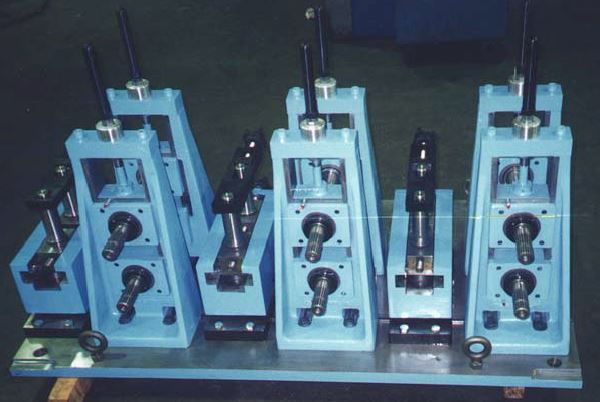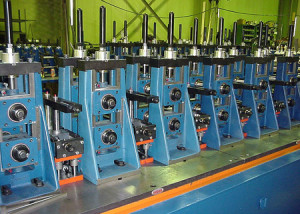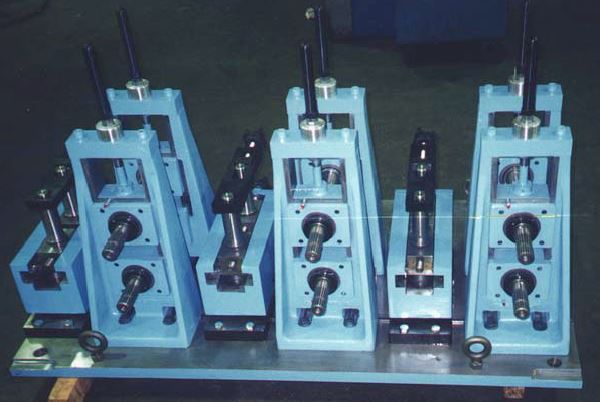Moving into “rafting” is an important upgrade for ambitious tube mills aiming for expansion and efficiency in a highly-competitive field where the ability to “quick-change” is a key enabler of performance.

The moveable subplates of rafts, unlike the traditional static design, place mills in a more flexible and competitive position for managing tooling changeovers. One example of this flexibility is the presence of a second raft set up in advance to be exchanged for the first one.
It’s no secret, it should be noted, that upgrades to rafting create challenges of their own. For example: 1. Disconnection and reconnection of the universal drive shafts with the exchange of each raft; and 2. Loading and unloading of the rafts themselves.

1. In the most basic rafted mill design, the universal drive shafts are disconnected manually by the mill operator prior to a raft exchange, a procedure that arguably can take as long as an exchange on a conventional mill. However, the use of so-called quick-disconnect universal shafts can remove this handicap.
2. Successful loading and unloading is also readily available. The most common method utilizes simple overhead cranes, while a variation includes using “fabricated” raft plates with honeycomb patterns that allow the raft to be lifted with a fork-type mechanism.
Another relatively new raft handling method employs the use of an Automatic Guided Vehicle (AGV). Although AGVs come in many shapes and forms, a basic fork-type AGV or “driverless fork truck” lends itself well to a raft handling application using fabricated rafts.
With developments such as these, changeover times of 15 minutes or less are possible.



